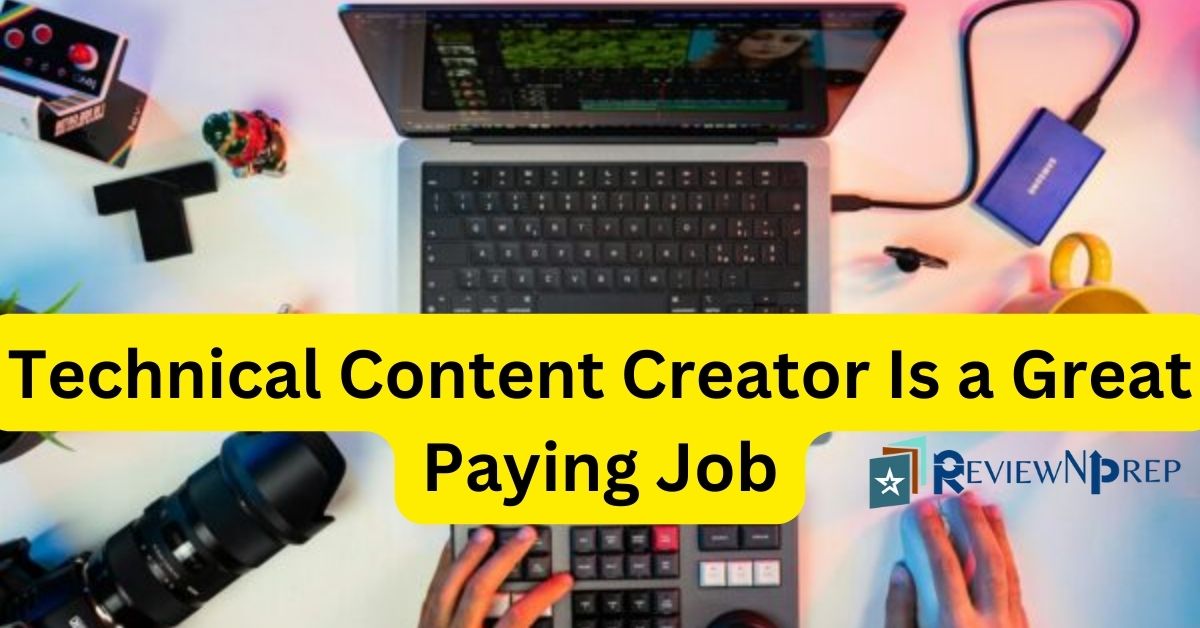Starting a career as a content creator can be a journey filled with opportunities to share knowledge and solve problems.
Whether you’re passionate about coding, cybersecurity, data science, or any other technical field you can use your expertise to create content that educates and empowers others. On top of that, you’ll start developing and boosting your personal brand.
Why not consider a career as a technical content writer? Take a look at our guide and learn more about the steps we’ve outlined and deemed most important.
As with everything in life, there are always more concepts you can learn about becoming a tech content creator, but we believe these listed will get you going full sail.
Let’s get going!
Crucial steps to become a technical content creator
Being a technical content creator is both a demanding and fulfilling commitment that requires persistence and enthusiasm; especially if you plan on sticking it out for the long run. Following the steps in this guide, from defining your niche, and choosing your platform to measuring user behavior will help you set the groundwork for a satisfying career.
Here are six steps we found crucial for becoming a technical content creator.
1. Pinpoint your niche
When first starting your technical content creator career, it’s easy to get caught up and try to cover all topics. Although it might be tempting to try everything at once, it’s a sure way to slow yourself down, and eventually burn out.
So, how should you go about this? Here are a few steps to consider:
- Your interests and passions: Are you drawn to web development, cloud computing, machine learning, cybersecurity, or perhaps something specialized within these areas? You’ll find that it’ll be much easier to talk about the topics you’re passionate about, even when the motivation has dried out, or you feel overwhelmed and tired. This is a long-term game, so you need to make sure you can show up even on bad days!
- Work and life experience: What’s your area of expertise? Look back on your professional life and determine which skills you honed the most throughout your career. This will help you determine in which area you have the deepest understanding.
- Analyze the market and competition: Before even starting to produce content, you need to determine whether there’s a need for your services in the first place. Check the forums and websites, and see if the audience is looking for what you offer.
There are other steps you can try, of course, but don’t even start without thinking long and hard about these three.
2. Learn more about your audience

One thing many technical content creators forget is that they make the content for their audience, not themselves.
Naturally, you should be happy with what you present to the world, but the audience’s response is something that determines your success.
So, what separates great content creators from average ones? They know their audience inside-out.
Now, it’s not easy to get there, but it’s well worth your time. The key here is to listen and observe carefully.
Visit the forums and groups your ideal audience frequents.
- What questions are they asking?
- What are their struggles and desires?
- What are they expecting from a piece of content?
After that, creating a content strategy that resonates with them will be much more streamlined since you have all the necessary info.
3. Choose your platform

Before becoming a technical content creator, you should consider the format (or formats) you’ll be using to get your message out there. That’s where your audience research kicks in.
What types of content does your audience like? Do they engage better with videos, or with the written word? Do they like in-depth material or do they prefer short-form pieces of content?
You’ll probably have the urge to cover many different platforms, which is all good and well. Being omnipresent could help establish and solidify your brand even more.
However, focusing your efforts on just one or two platforms will help you shift your energy and creativity toward one source, and not get drained and washed out in the process.
Think about yourself, what can you see yourself doing in the long run? There are many formats you can choose, but let’s list a few of the most popular among creators:
- Blog posts: If you’re not intimidated by daily writing, and you can see yourself converting your thoughts into deep, well-researched posts, this might be the medium for you. For those looking to generate blog posts quickly, AI text generator online free tools like Squbiler and 1ClickBlog offers a seamless AI-powered solution to create content in minutes.
- Videos: Not everyone can easily stand in front of a camera and present their content to others. But, if that’s your forte, you can start producing quality videos, especially since the demand for video content is at an all-time high. You can kill two birds with one stone here by using a tool like Happy Scribe to convert video to text, and repurpose your content and make a post out of it. Solidify your brand presence by using an AI logo generator for a professional-looking logo to use across your video thumbnails and social channels.
- Podcasts: Show of your expertise by keeping up with the industry trends and interviewing those who are known as experts in the field. Your audience will have a lot more trust in you when they see hold your end of the conversation with authorities in your field. Moreover, a podcast is an incredible hub for repurposing social media content, helping you enhance your online presence. A single episode can generate a podcast transcript and show notes you can use as blog posts and improve your SEO, a video or audiogram for YouTube, short clips for Tiktok and Reels, and provide content for all week to post on social media.
- Email newsletters: This is where you can get more personal, especially if you segment your audience properly, by demographics, interests, etc. Then you can reach out to them by delivering personalized email sequences.
Naturally, there are other ways you can reach out to your audience, like Facebook, Instagram, or any other social network. However, the principle stays the same. You need to know your audience, and keep producing, as success won’t happen overnight, but with consistency.
4. Producing valuable content regularly
When it comes to creating tech content, it’s quality over quantity, at all times. But sometimes you can’t get to quality without producing in quantity. Sounds confusing, right? In reality, it’s not.
To get to a point where you (mostly) churn out good content, you need to flex your creative muscles constantly.
Inspiration and motivation come and go as they please, but discipline is something that pushes the needle in your favor. And top content creators are aware of this.
It’s safe to say that your first published pieces of content will not be as good as you intended them to be. But, practice makes perfect!
Producing content on a regular basis helps you both gain momentum and polish your skills. Then with each new piece, you’ll notice how you grow better in presenting your ideas, talking directly to your audience, and generating useful information.
So, get in the habit of making content (even though not all of it will be publishable), asking yourself questions, and generating ideas on a daily basis. You’ll thank yourself later.
5. Engage with your audience and peers
As a technical content creator, your end goal is to get your content noticed. And the best way to do that is by encouraging engagement from your audience. That’s what the algorithms love!
You have to think in terms of likes and comments; those are the actions that will push you up by the algorithms and show you to more people.
Make sure to ask the right questions, maybe even if they’re provoking from your end. The main point is that these questions compel your audience to engage and answer them.
Promptly respond to comments, queries, and feedback from your viewers to foster interaction. Establish platforms for conversations, teamwork, and knowledge exchange within your community through forums, social media groups, or live Q&A sessions.
Equally important is engaging with creators and experts in your niche, which can open up valuable opportunities for collaboration, learning, and personal development.
Participate in forums, social media communities, or conferences where individuals with interests come together to share thoughts, perspectives, and resources. Collaborate on initiatives like projects or guest articles to broaden your influence and connect with audiences.
Developing a network of peers and partners can amplify your influence.
6. Always measure performance

Knowing what works and what doesn’t is key to improvement. Without proper measurement processes, you won’t be able to determine what metrics are working in your favor and detect any red flags. It’s like trying to find a needle in the haystack.
Tracking your KPIs and data will give you deeper insights into your user behavior and demographics.
So, if you’re on social media, metrics like shares, views, or impressions give you a fine insight into which type of posts garners the most attention and engagement. In turn, this will give you a chance to double down on such posts, and maybe push some other, unpopular aside.
If you run a blog or website, metrics like CTR, bounce rate, or average time on page provide you with a clear picture of which piece of content needs refining, changing, or removing altogether.
There are numerous tools available for tracking and measuring user behavior, which all require a bit of getting used to. But once you get a hang of it, you’ll find them invaluable. Either that, or you can try some of the top US user research firms, that can help you get more insight on the discovery path.
Are you ready to dive right in and become a tech content creator?
We’ve learned that becoming a successful technical content creator requires dedication, research, and resilience. It’s not much different than any other profession.
Beginning the journey will probably be the hardest, you won’t be satisfied with your output, but once you get the necessary mileage, you’ll be an expert in no time.
So, don’t wait, and start producing amazing content!
Further Reading:
How to Start a Career as a Data Analyst: Your Path to Success

